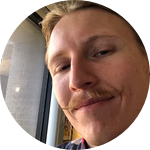About This Project
Children with autism spectrum disorder (ASD) are among the fastest growing population of pervasive developmental disorders. These children have also demonstrated deficits in gross motor performance. However, what is lacking in research is the clear understanding of what modifications are best when providing the Test of Gross Motor Development, 3rd Ed. (TGMD-3). This study seeks to create a set of modifications to the administrative protocol.Ask the Scientists
Join The DiscussionWhat is the context of this research?
- Autism spectrum disorder (ASD) rate is increasing, 1 in 68 (CDC, 2014).
- ASD characterized by persistent deficits in social communication & restricted, repetitive patterns of behavior, interests, or activities (DSM-V, 2013; National Research Council (NRC), 2001).
- Gross motor deficits in children with ASD have been demonstrated when comparisons are made to typically developing peers (Liu & Breslin, 2013; Jansiewicz, et al., 2006).
What is the significance of this project?
- What is lacking among research is a clearly defined set of guidelines for administering the motor assessment to children with ASD.
- Children with ASD do not benefit from observing others perform the same way another child may (Staples & Reid, 2010).
- Modifications to current motor assessments are needed to account for the unique behaviors and challenges presented by children with ASD (Lord, et al., 2005).
What are the goals of the project?
- Compare the traditional protocol (control) with two experimental groups: a task card group and video model group.
- Groups will be given a validity check to check for understanding of the tasks given and produced.
- Through this study, a recommendation for modifications to the TGMD-3 will be made, when using the assessment with children with ASD.
Budget
Because of the unique population utilized for this study, it is important to understand the severity level of the children in each group. The Social Communication Questionnaire will allow us that opportunity. This assessment is given to the parent of each child in the study to assess lifetime or current behaviors of the child to better understand their behaviors and give an indication of the severity of ASD within the child.
As a graduate researcher, I unfortunately do not have access to this protocol through my program, nor any on campus. This is a measure that I have to purchase on my own and with limited funds it is a stretch.
With your help, this survey will allow my research to have a better understanding of the participants with ASD, and therefore we may be able to give better recommendations to use the TGMD-3 with this population.
Meet the Team
Team Bio
Currently, I am beginning my second year as a doctoral student at the University of Virginia in the Adapted Physical Education program. I started my career as a general physical educator and taught for four years in both Michigan and Colorado. About two years ago, I became especially interested in the motor development of my students, specifically the students with disabilities, which sparked my interests for continued education.This project has been developed through many discussions, which ultimately came down to trying to answer the question, “How do we know if there is a deficit if we do not fully understand the modifications needed during the assessment?” It is a project theme that will continue to on throughout my dissertation studies.
Outside of research, I am an avid outdoorsmen and enjoy mountain biking, trail running, hiking, and rock climbing.
Please refer to my portfolio website for any further questions: www.colombodougovito.com
Andrew M. Colombo-Dougovito
I am an Assistant Professor of Sport Pedagogy and Motor Behavior in the Department of Kinesiology, Health Promotion, and Recreation at University of North Texas (UNT). I, currently, serve as the Director of the UNT Physical Activity and Motor Skill (UNT-PAMS) program and Faculty Liaison to the Kristin Farmer Autism Center at UNT. I am interested in motor skill development and physical activity behaviors across the lifespan of individuals on the autism spectrum. I am also interested in understanding the influence of assessment and intervention to help build motor skills, as well as the societal and environmental structures that can positively or negatively influence physical activity engagement and skill development. When not working, I can be found outside—mountain biking, climbing, and hiking.
Press and Media
This project was recently proposed to the National Consortium for Physical Education for Individuals with Disabilities at the Emerging Scholar's Symposium as a work in progress.Project Backers
- 9Backers
- 100%Funded
- $170Total Donations
- $18.89Average Donation
